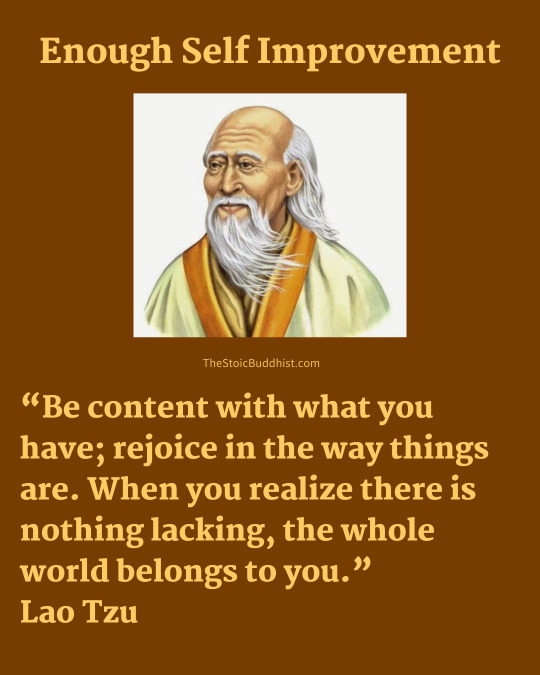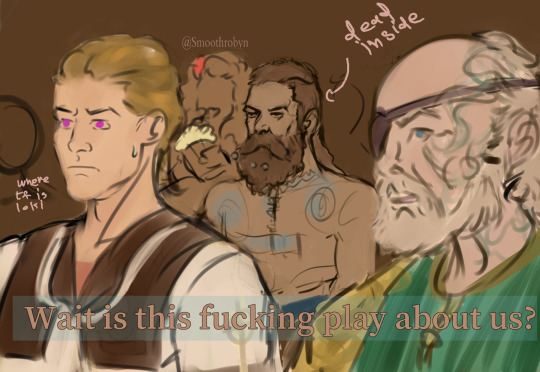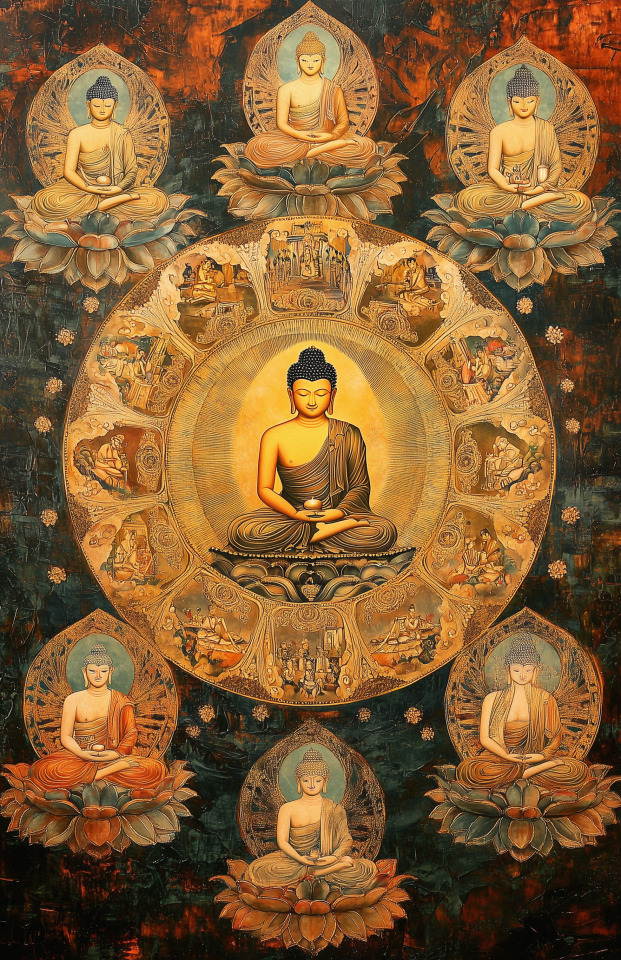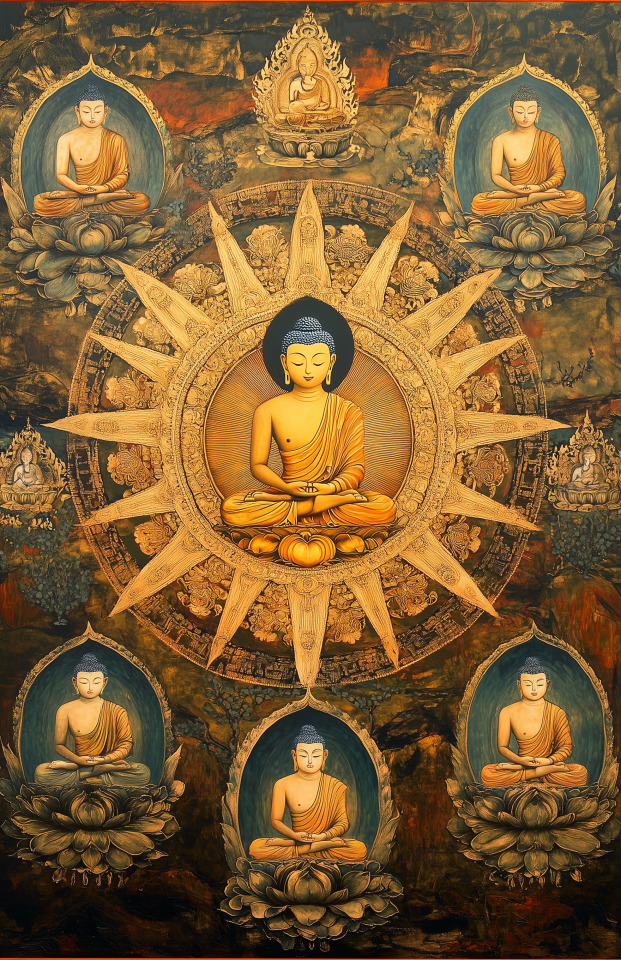#pali canon
Explore tagged Tumblr posts
Text
Morning meditation — Having transcended all conceptual views.
Morning meditation — Having transcended all conceptual views. https://wp.me/pFy3u-9AQ
‘Having transcended all conceptual views, being pure and peaceful within, well liberated and independent, one goes beyond all attachment.’ The BuddhaUdāna (Ud 1.10) Mediterranean Spurge. On the net, of course, it’s morning, afternoon, evening, or nighttime 😀 somewhere. Click here to read more Morning Meditation posts. On our Twitter account, Buddhism Now @Buddhism_Now, most mornings we post a…
3 notes
·
View notes
Text
An Introduction to Buddhist Sutras
I was inspired to write this post after seeing this joke online on that one social-media site: https://twitter.com/tanaka_tatsuya/status/1861530374968430741?s=53&t=tX_Y4nc8hZKwwENjRcVvzw The joke here is a Japanese-Buddhist monk looking at a receipt from Muji (a Japanese home goods store), and commenting that this “sacred text” shows they purchased a lot.1 This happens to us too. Anyhow, what…
2 notes
·
View notes
Text
hi! as you may know i have just acquired the bhikku nanamoli/bhikku bodhi english translation of the majjhima nikaya! i would like to ask anyone willing to comment on this, what order should i read the suttas in? i was initially going to simply read them from 1 to 152 in the order they are presented in the book, but i also found this study guide which offers perhaps a more coherent/cohesive order in which to progress through the suttas. for anyone who has spent time with these texts, which of these two reading orders would you recommend?
#buddhism#buddha#majjhima nikaya#bhikku nanamoli#bhikku bodhi#theravada#theravada buddhism#pali canon
2 notes
·
View notes
Text
Enough Self Improvement
Our world is always imploring us to improve. You need to have a better physique, create some new skills so that you don’t get left behind, improve your relationships, your spirituality, learn a new language, or manage your money better. Here is the thing; the list is endless and 90% of the investment you make reading or taking classes in self improvement is pretty much worthless. Why do we get on…

View On WordPress
#quotes quotestoliveby motivation motivationalquotes epictetus stoicism stoic acceptance choices anxiety anxious yoga meditation#Alan Watts#Bible#Buddhism#buddhist#Islam#Jesus Christ#Judaism#Lao Tzu#Marcus Aurelius#Marcus Aurelius Meditations#Muhammed#Pali Canon#philosopy#Quran#Self Improvement#Seneca#stoic#TheStoicBuddhist
10 notes
·
View notes
Text
"Does Master Gotama have any position at all?" "A 'position,' Vaccha, is something that a Tathagata has done away with. What a Tathagata sees is this: 'Such is form, such its origination, such its disappearance; such is feeling, such its origination, such its disappearance; such is perception...such are fabrications...such is consciousness, such its origination, such its disappearance.' Because of this, I say, a Tathagata — with the ending, fading away, cessation, renunciation, & relinquishment of all construings, all excogitations, all I-making & mine-making & obsessions with conceit — is, through lack of clinging/sustenance, released."
-- Aggi-Vacchagotta Sutta: To Vacchagotta on Fire
2 notes
·
View notes
Text
The asier viewing the prophecy were like:

#A paly of three parts#As in boom everybody dead#Heimdall is worried becouse he is in into it#By proxy of lokes doing lol#He is looking for the lil shit#Thats right we going by shy writer canon#heimdall#god of war#gowr#god of war ragnarok#gow#gow fanart#heimdall gow#Gow memes#God of war memes#gow odin#God of war odin#Hint of Heimtreus#thrud thorsdottir#If squint lmao
336 notes
·
View notes
Text

been thinking about Caleb Nomad again
#werewolves am i right#its just so fun to draw fanart of this character when my design is canon#uh oh pali is making headcanons about audio rp characters again#caleb gets tremors i said so#hes just a good boy#a good lad#my rotten soldier#oc#art#originalcharacter#originalartwork#sketch#character design#nomads tales#nomads tales and audios#nomad caleb#nomad babe#werewolf character#pali draws nomad
358 notes
·
View notes
Text
Writing my treatise on the fusion of traditional Buddhist ethics and modern liberal sexual mores (in sanskrit, of course): the Poly Canon
7 notes
·
View notes
Text
L’esprit dans l’esprit
“L’esprit dans l’esprit” ©Philippe Quéau (Art Κέω) 2024 Dans un texte du Canon Pali appelé « Le grand discours sur les fondations de l’attentioni », je lus un jour cette question : « Et comment un moine reste-t-il concentré sur l’esprit en lui-même ? » En mon esprit surgit alors une autre question, celle de l’ambiguïté de la question même. S’agit-il pour le moine de se concentrer sur « l’esprit…

View On WordPress
0 notes
Text
Morning meditation — Just as the great ocean has one taste.
‘Just as the great ocean has one taste, the taste of salt, so too this Dhamma-Vinaya has one taste, the taste of liberation.’ The BuddhaUdāna (Ud 1.10) Looking out to sea. On the net, of course, it’s morning, afternoon, evening, or nighttime 😀 somewhere. Click here to read more Morning Meditation posts. On our Twitter account, Buddhism Now @Buddhism_Now, most mornings we post a ‘morning…
2 notes
·
View notes
Text
Who Dwells In This House?
I’ve been mulling over a certain quotation of Honen (法然, 1133–1212), the 12th century Buddhist monk credited with spreading the Pure Land tradition in Japan, and thus founder of movements such as Jodo-Shu and Jodo-Shinshu: “All of our deeds in the realms of saṃsāra result from ties with the three worldly passions of greed, anger, and ignorance. Understand that when the worldly passions of greed,…
#Amida#Buddhism#Dhammapada#Honen#Japan#Jodo Shinshu#Jodo Shu#Nembutsu#Pali Canon#Pure Land#Shakyamuni
4 notes
·
View notes
Text
You can tell when I have gained or returned to an old hyperfixation by if I go through the effort to make a fan alt in XIV after creating justifications for the main job said alt will have...AND run them through ARR for nth time since I started this stupid MMO.
#FFXIV#Hollow Knight#I'm back on my bullshit as I found out Little Ghost on Lamia was open#Ghost is Ninja for very specific reasons#mostly because of how squishy fast dps I play them#crying until level 60 to get any sort of horns that are not the gold saucer horns everyone uses#Hollow would def have been a Paly pre-game#DRK arc for Hollow post canon lessgo#Hornet would be Dragoon for jumpy jumps or Red Mage#change my mind
0 notes
Text
The Perils Of Attachment
Introduction This is a bit longer than my normal posts as the topic of this post is focused on the 2nd Noble Truth “the origin of dukkha” and also touches on the 3rd and 4th Noble truths. For the purposes of this blog post, you can think of craving and attachment as the same thing and will be used interchangeably. Most of my references are from books in the Pali Canon. The Pāli Canon is the…

View On WordPress
#attachment#Buddha#Buddha Nature#Buddhism#buddhist#cessation of suffering#craving#cravings#Dali Lama#dhamma#dharma#dukkha#happiness#meditate#meditation#nibbana#nirvana#Pali#Pali Canon#practice#present#Sanskrit#suffering#The Noble Eightfold Path#TheStoicBuddhist#Thich Nhat Hanh
1 note
·
View note
Text
iirc according to the Pali Canon of Buddhism the Buddha had a big ol hog
no google results for "girthful messiahs"

44 notes
·
View notes
Text
Another part of untangling the Garashir knot i.e. trying to make their relationship make sense for fic-writing purposes is the question of Bashir’s ability to trust and be vulnerable around Garak.
I got to thinking about that because of this 10-year-old post (yay old meta dives!) that points out that Bashir is just as emotionally closed off as Garak in The Wire, and it’s really true - he never explicitly tells Garak he that he cares about him, but instead frames his care for him through their doctor-patient relationship, or through his higher ethical convictions (that is, when Garak says “Have you considered I might be getting exactly what I deserve?” and Bashir says “No one deserves this”). And given that part of the conflict of that episode is Bashir’s uncertainty as to whether Garak actually considers him a friend or cares for him on the same level as Bashir cares for Garak - as indicated in Bashir’s conversation with Dax - I think it speaks to a level of emotional self-protection on Bashir’s part that’s pretty often at play in his relationship with Garak.
Because for all that he wants Garak to open up to him in those early episodes - it comes up in a more playful mode in the way they banter with each other, but The Wire shows more legitimate frustration from Bashir at the possibility that Garak might not trust him - Bashir never actually leads by example there. When does he ever share anything about his personal history with Garak? When does he ever confide in him about his hopes and fears and insecurities? Pretty much never! And he’s not at all averse to sharing things about himself, whether it’s to get laid (like the adapted story about his medical exams) or to make a friend (like him telling Miles about Palis in Armageddon Game, or telling that pregnant woman about Kukalaka in The Quickening). He gave Jadzia his medical school journals (to get laid… and make a friend?). And there are plenty of instances of him confiding in his friends - Miles, Jadzia, Ezri - about his insecurity, fear of failure, feeling like he’s a monster because of his genetic engineering, etc.
But not with Garak. The closest he gets to sharing anything significant about himself is his grumpiness about turning thirty in Distant Voices, which isn’t even close. And you could argue that that’s a contrivance of the writing, a consequence of their relationship not being allowed to be developed more. But I actually think it makes a lot of sense from a character angle. Because for all that he seemingly can’t stop talking about himself, Bashir is a lot more selective about what parts of himself that he shares than it initially seems, as is most obviously demonstrated by the fact that he hid his being genetically engineered from everyone for years. So I do take him at his word when he tells Jadzia in The Wire that he doesn’t exactly trust Garak either, and I think that’s modeled in his (possibly subconscious) reluctance to truly open up to him. I mean, in Distant Voices he casts the guy telepathically attacking his brain as Garak! Which he and Garak laugh off in an extremely charming scene at the end of the episode, but it really does say something about how he sees Garak on a subconscious level.
So it’s honestly much easier for me to imagine fic scenes and whatnot in which Garak opens up to Bashir, because there is plenty of precedent for that in canon - largely in The Wire, but also when he vents to Bashir about his frustration with Tain and desire for Tain’s forgiveness in In Purgatory’s Shadow. And there’s a real sense that he really does want to unburden himself to Bashir, even if primarily in his own evasive, circumlocutionary way. But it’s so, so hard for me to get Bashir to a place where he’d do something similar with Garak, because given his characterization wrt their dynamic, I just feel like there’d need to be so much more work done in their relationship to get him to feel that kind of trust towards Garak.
(This dovetails with my headcanon that they weren’t that close in the later seasons, because the events later in the show would honesty make that even more difficult. After being interrogated by an intelligence organization, I imagine Bashir would be even warier of Garak!)
There’s also the fact that the most intense intimacy between the two of them always comes up in situations where Bashir is the stronger one, and Garak is the one who needs to be cared for, who’s being pushed into being vulnerable. And that again is a contrivance of the writing, but it is something that I think is compelling to contemplate when it comes to their relationship dynamic - specifically, how it might affect a long-term relationship dynamic in a post-canon setting. Because Bashir can be something of a fixer-upper when it comes to his romantic relationships, and I do see him as drawn to dynamics where he’s the stronger one who’s positioned to care for and guide the other person. And so, while I don’t think Bashir would be the sole cause of any difficulties that might arise in their relationship - trying to get open and honest communication from Elim Garak really would be like pulling teeth - I can really see him falling into a pattern of thinking with Garak wherein Garak is the one who needs to be cared for, the one who needs to communicate with him, etc etc, but being very very bad at being open and communicative with Garak in turn. Even if their relationship does develop sufficiently for him to feel more comfortable sharing himself with Garak - and I really think that it could - I still imagine his first impulse when he’s Going Through It would be to close himself off from Garak. And that does cause problems.
A broader angle that canon does not really bring out is the potential for Bashir’s dynamic with Garak to draw out some of Bashir’s hypocrisies, or aspects of his ideology that are incomplete or contradictory. Bashir on Cardassia post-canon has a lot of potential to do this - not that I’d want him to let go of Federation ideals, but the reality of living somewhere else would necessitate those ideals being qualified, or him becoming more flexible. And with the shift in their dynamic, in which Garak is in his natural habitat (even if it’s drastically changed from the Cardassia he remembers) and Bashir is the outsider, Garak could potentially be put in the role of having to guide or protect Bashir. And given the nature of Cardassian politics, the actual methods he might take in order to do so would imo not necessarily be within Bashir’s comfort zone. And I like the idea of that conflict, and that kind of testing of Bashir’s values and expectations and perceptions, coming through on a smaller scale just within their relationship, wherein Bashir really wants Garak to communicate with him but finds it (not even consciously!) very difficult to reciprocate that.
#like mm yes garak is afraid of his feelings for bashir for lots of reasons#but i do think bashir is similarly guarded and that comes through in their dynamic#and how even if you think they fucked (and i do) they never become quite as close as they could#garashir#my meta#ds9#julian bashir#elim garak#ds9 talk#also god bashir is so gay in the wire#stabs jadzia's plant bc he's mad that he and garak might not really be friends. gets indignant about garak asking quark for help and not hi#peak Being Weird About Garak hours
69 notes
·
View notes
Text


Vairocana | The Five Wisdom Buddhas Talon Abraxas
Not all Buddhas were considered flesh and blood or walked the earth. The Five Wisdom Buddhas are the Wisdom states as persons. The body of Vairocana is the body of the True Dharma.
The Five Wisdom Buddhas arose during the Mahayana development in India and were taken up by Tantric Buddhism. In Japan they appear in Shingon. These Buddhas differ from the Buddhas who appear in the lineage or who are said to have walked the earth at a certain time in a certain place as they represent principles of Mahayana teaching. They are sometimes called ‘Meditation Buddhas’ to distinguish them and because they may only be encountered in the states of meditation that form their bodies.
Vairocana is called the ‘Sun Buddha’ and is the ‘First’ (Skt. Adi) or ‘Primoridial’ Buddha and sits in the central place of the Five Wisdom Buddhas mandala surrounded by the four other Wisdom Buddhas who sit at the cardinal points. His name in Japanese is Dainichi Nyorai – The Buddha of Universal Illumination. His names and attributes are all connected with light and illumination, rays of life-giving power that initiate, nourish and sustain as the sun does all life on earth.
In Mahayana teaching his body is the Body of the Dharma (Skt. Dharmakaya), and is synonymous with such terms in Zen as ‘True Nature’, ‘True Face’ and ‘Buddha-nature’. His nature is emptiness (Skt. Sunyata), the ‘unborn’ of which the Buddha spoke in the Pali Canon, without which that which is born and created could not come into being.
Vairocana first appeared in the Brahmajala Sutra, a 5th Century manuscript written in Sanskrit and translated into Chinese by Kumarajiva. The title translates into English as Brahma’s Net Sutra. This relates to the analogy used by the Buddha who described a net that spreads throughout the universe in the three dimensions of space: length, breadth and depth. Where three strands meet there is a jewel to hold them in place like a dewy spider’s web. Each jewel reflects both itself and all the other jewels in the net simultaneously. The feel of this image is used to point towards the reality of emptiness, the true nature of the Dharmakaya – which is the body of Vairocana.
“Now, I, Vairocana Buddha, am sitting atop a lotus pedestal; on a thousand flowers surrounding me are a thousand Sakyamuni Buddhas. Each flower supports a hundred million worlds; in each world a Sakyamuni Buddha appears. All are seated beneath a Bodhi-tree, all simultaneously attain Buddhahood. All these innumerable Buddhas have Vairocana as their original body. “
-The Brahma’s Net Sutra
As the primordial principle Vairocana speaks outside the phenomenal world where all time is simultaneous. Although in the phenomenal world he has this or that name and is portrayed using this or that hand position (mudra), wearing certain garments and headdress, in truth he is beyond conceptual imagination and yet is ever present in each form, as Master Hakuin wrote: ‘‘like salt in seawater or glue in paint.”
In Shingon Buddhism he is represented by the Sanskrit letter ‘A’ which expresses life & death; emergence & return.
The mantra associated with Vairocana is:
Om a-vi-ra-hûm-kham vajradhâtu vam (Skt.) Om All Pervading One; Imperishable One
76 notes
·
View notes